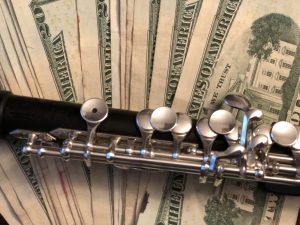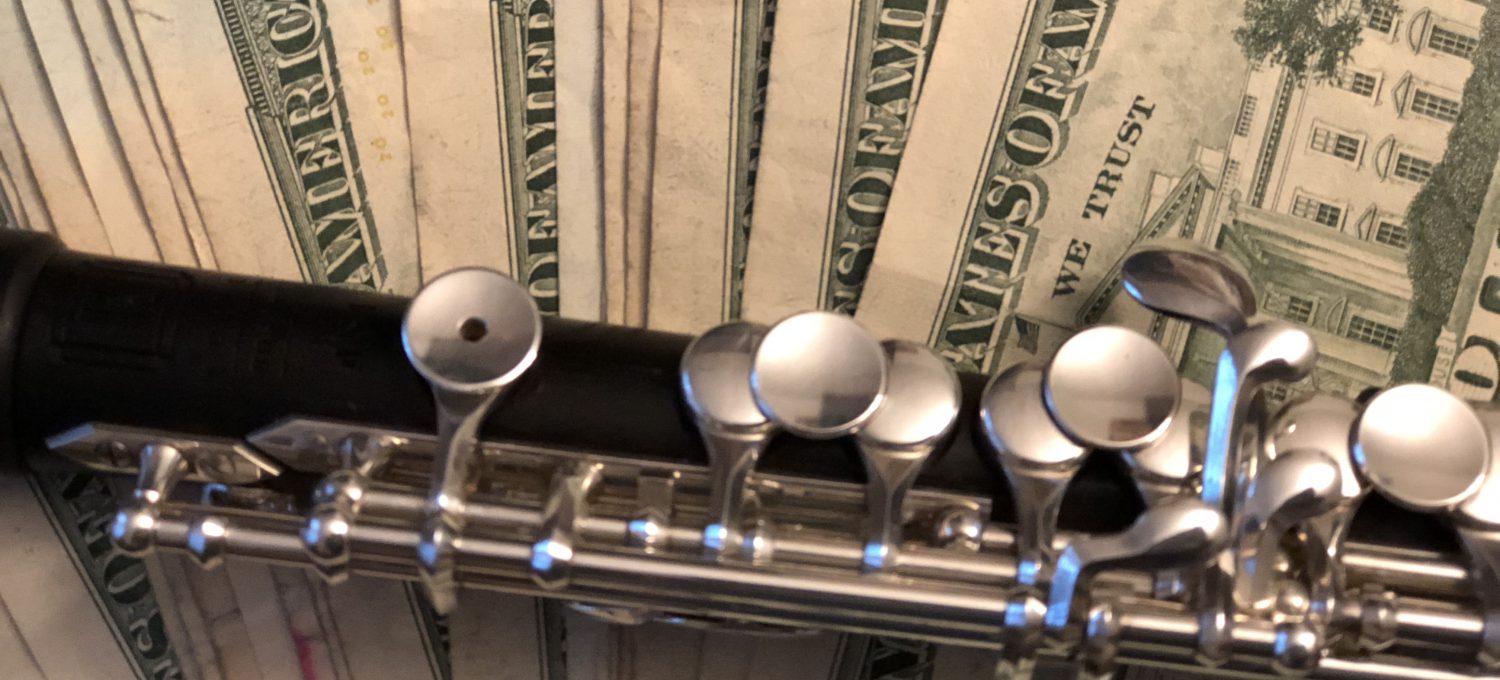Purchasing a piccolo can be a daunting task. There are so many brands and options available that it is hard to even know where to begin. There are a few important questions that need to be answered as you start the journey, and this guide is meant to help narrow down your options in the search for a piccolo. It is also important to keep in mind that while a new instrument is always nice, there are plenty of well cared-for used instruments out there.
Question 1. Where will the piccolo be used most, what venue, what ensembles?
This is one of the most important questions and that is why it is the first. There is a huge difference between the concert hall and the marching field. Instruments used in marching band need to be sturdy and well made to deal with the vast range of atmospheric conditions and abuse they will see on the field and in the stands. If marching band is the primary use for a piccolo, then a metal piccolo is often the best choice, because they provide more projection, they’re fairly sturdy, and they are much less susceptible to weather conditions. Composite piccolos also offer many of the same qualities as the metal instruments, and I personally prefer them to metal. The composite material never seemed quite as cold on my lip as metal did, and condensation didn’t seem to clog the instrument as much as it did the metal counterpart. Wood is very sensitive to temperature changes, causing the wood to crack, which can result in quite extensive and expensive repairs.
If the concert hall is the primary venue, then composite or wood instruments are the best choice. The tonal properties are far superior to metal, because wood and composite piccolos tend to be less bright or harsh and therefore blend in ensembles much better than metal piccolos. I have played some really lovely handmade sterling silver piccolos that had a beautifully sweet tone, but they are few and far between.
If it is necessary to be able to go from the marching field to the concert hall (like many students must do) then the best choice is a composite instrument. Composite instruments generally have the characteristics to suit either situation. They are sturdy and hold up under to varying weather conditions while still sounding great in the concert hall.
Question 2. Who is the piccolo for? Who will be playing it?
This question may seem silly, but it is still important. There is a huge difference between a tenth-grade marching band student and a college student who is taking orchestral auditions. The needs of a professional player and a young high school student are very different and the next question goes hand in hand with this one. For a professional, this is a career investment, while this may only be a passing extracurricular endeavor for a high school student. Quality is often closely tied to budget.
Question 3. What is the budget? $200? $800 $1000? $5000?
Money does come into the equation and often vastly  influences purchasing decisions. There are quite a few nice instruments out there for under $1000 dollars. These instruments are intended for beginning and intermediate players, while instruments over $6000 are highly prized, artist level instruments. Shopping for an instrument is much easier when purpose and budget are considered alongside who will be playing the instrument. Spending $800 for a four-year high school marching band career doesn’t seem so bad, right? Memories were made, fun was had, and maybe the instrument will find another home and continue to help another student make memories. In contrast, professionals who spend $6000 or more on an instrument for a career of performing need to know that their instrument is going to respond to all of their musical decisions and represent their very best musical abilities. These are also instruments that, in time, may pay for themselves when players win jobs or get hired to perform. For professionals, these more expensive instruments are investments, which is how those higher dollar amounts are justified. You do get what you pay for!
influences purchasing decisions. There are quite a few nice instruments out there for under $1000 dollars. These instruments are intended for beginning and intermediate players, while instruments over $6000 are highly prized, artist level instruments. Shopping for an instrument is much easier when purpose and budget are considered alongside who will be playing the instrument. Spending $800 for a four-year high school marching band career doesn’t seem so bad, right? Memories were made, fun was had, and maybe the instrument will find another home and continue to help another student make memories. In contrast, professionals who spend $6000 or more on an instrument for a career of performing need to know that their instrument is going to respond to all of their musical decisions and represent their very best musical abilities. These are also instruments that, in time, may pay for themselves when players win jobs or get hired to perform. For professionals, these more expensive instruments are investments, which is how those higher dollar amounts are justified. You do get what you pay for!
Bonus Question: What extras do I want on my piccolo?
This is a rather challenging question to answer. In general, most piccolo makers do not offer the same options as on their flutes. Some piccolos offer a split E mechanism; however, this is not available on all models and in some case, it is standard and not an option. There are manufacturers who offer C# trill keys, G-A trill mechanisms, vented C keys, split e mechanisms, Brossa F#, and even quarter-tone mechanisms, but these are generally only available on artist level instruments. Some companies do offer a limited head joint selection. As with the other options, the more expensive and better quality the instrument, the more options there are to customize the instrument to the player’s needs.
A word of advice…
I often discuss instrument purchasing with my students and their parents and work to educate them on what to look for, to help them understand need vs want vs money. I have usually met with success, although on occasion a parent or student has come to a lesson very proud of the $99-dollar instrument that they got at any one of a hundred online stores. Many of these instruments are poorly made from cheap materials, and many repair technicians will not work on these instruments because parts are not available, basically rendering the instruments disposable. As a technician, I have seen these instrument shaped objects (ISO) on my bench and more than once had to call with a repair quote that was more than the original cost of the instrument. If budget is a major concern, talk to your local music store or flute teacher about consignment or used instruments. They are often much better than most of the cheap online instruments. Personally, I have worked on piccolos that are decades old and in excellent mechanical condition with only some minor finish blemishes. I have even been surprised by how well some of these used instruments play after an overhaul. They are worth considering.
9mm Piccolo Recommended Brands
I have provided a basic categorical price list in .pdf form to make it easy to print and refer to at a later time. Instruments are listed by price point and have been given a category or label so that the reader has a clearer idea of who may benefit from an instrument in the different categories. There is always some overlap in price as well as opinion. Do your research and ask questions often. Readers are always welcome to email questions about articles!


I read this article with great interest. I realize no list is all inclusive but I noted the absence of the Zentner piccolos, which I have found to often be exceptional instruments. There is of course, that relationship between these and the original Roy Seaman piccolos. Recently I purchased a used Zentner Piccolo and have been amazed at how quickly it speaks, with less need to change embouchure between notes. In my trial with Flute Center of New York it beat out 2 excellent Haynes piccolos hands down.
Thanks for your comment Kitty. When I wrote the article I was trying to focus on instruments that are readily available. I completely agree that used instruments can be just as wonderful. Sadly, finding one of these gems is difficult because many players keep them for the same reason that we would love to have them. You rarely see a Brannen piccolo for the simple fact that people love them. I encourage everyone to try as many instruments as possible to find the one that works best for you but don’t overlook used instruments. There are quite a few companies that specialize in consignment instruments and you can often get a great instrument for less than a brand new one. I am glad you found an instrument that works for you!